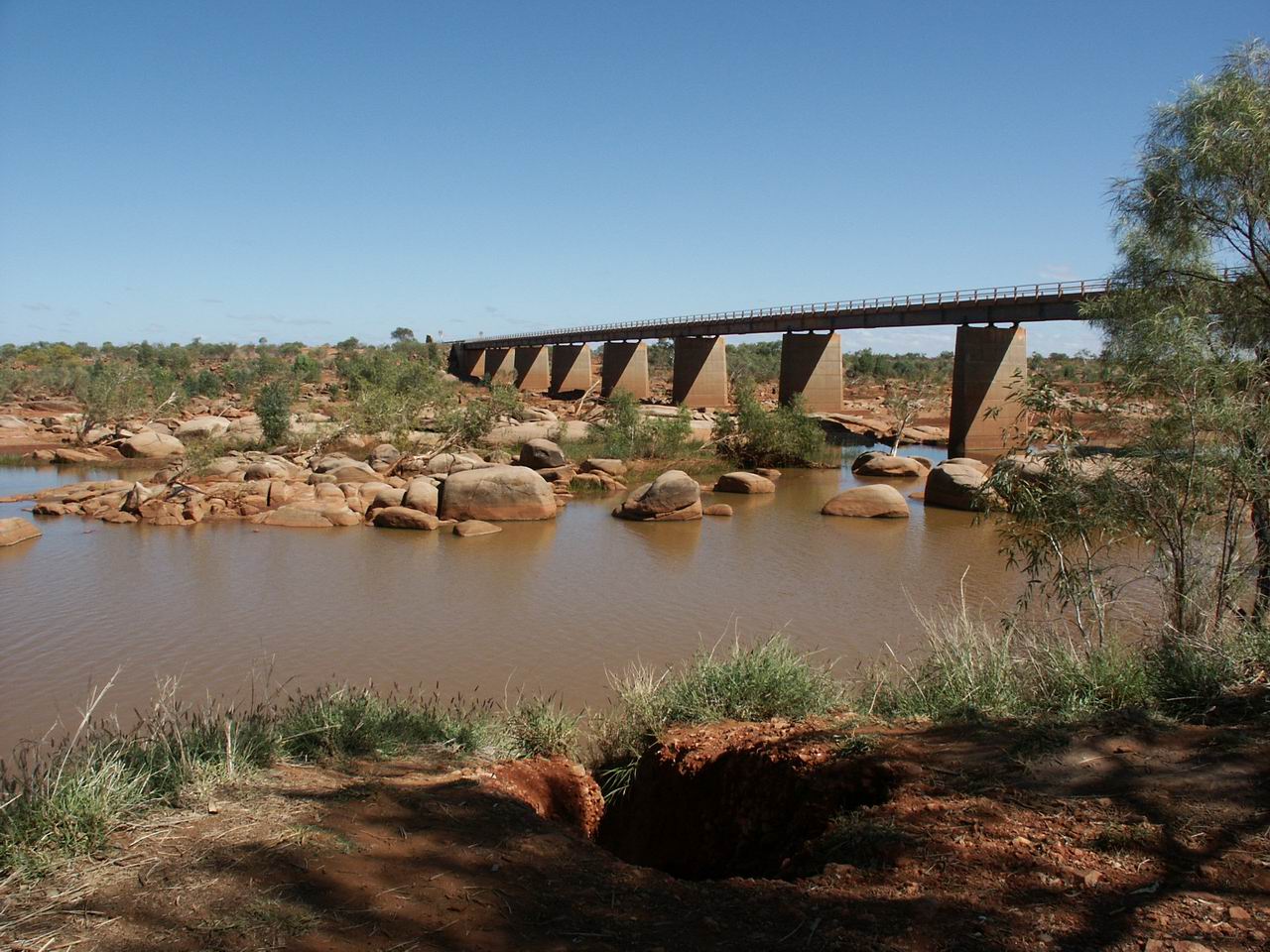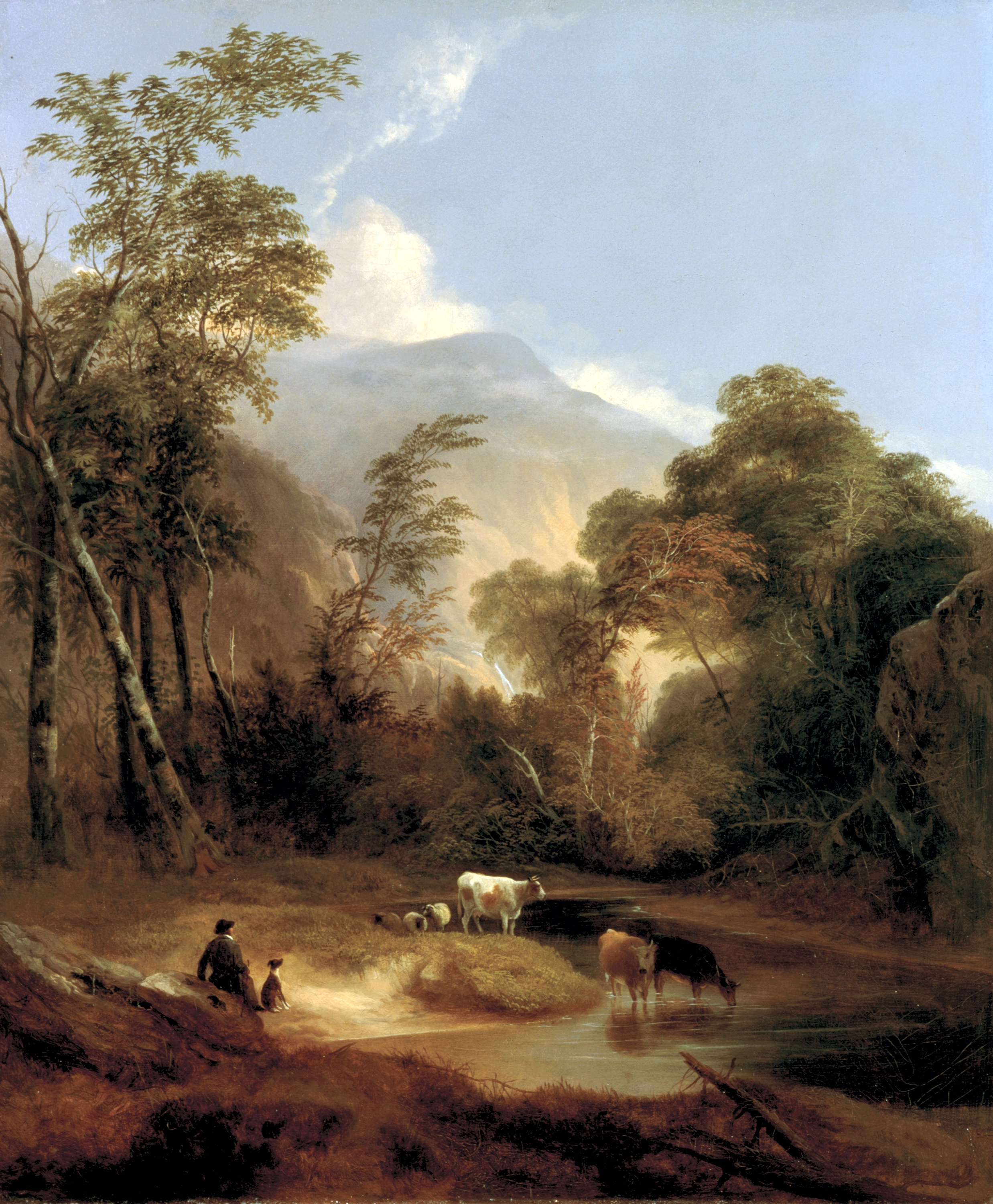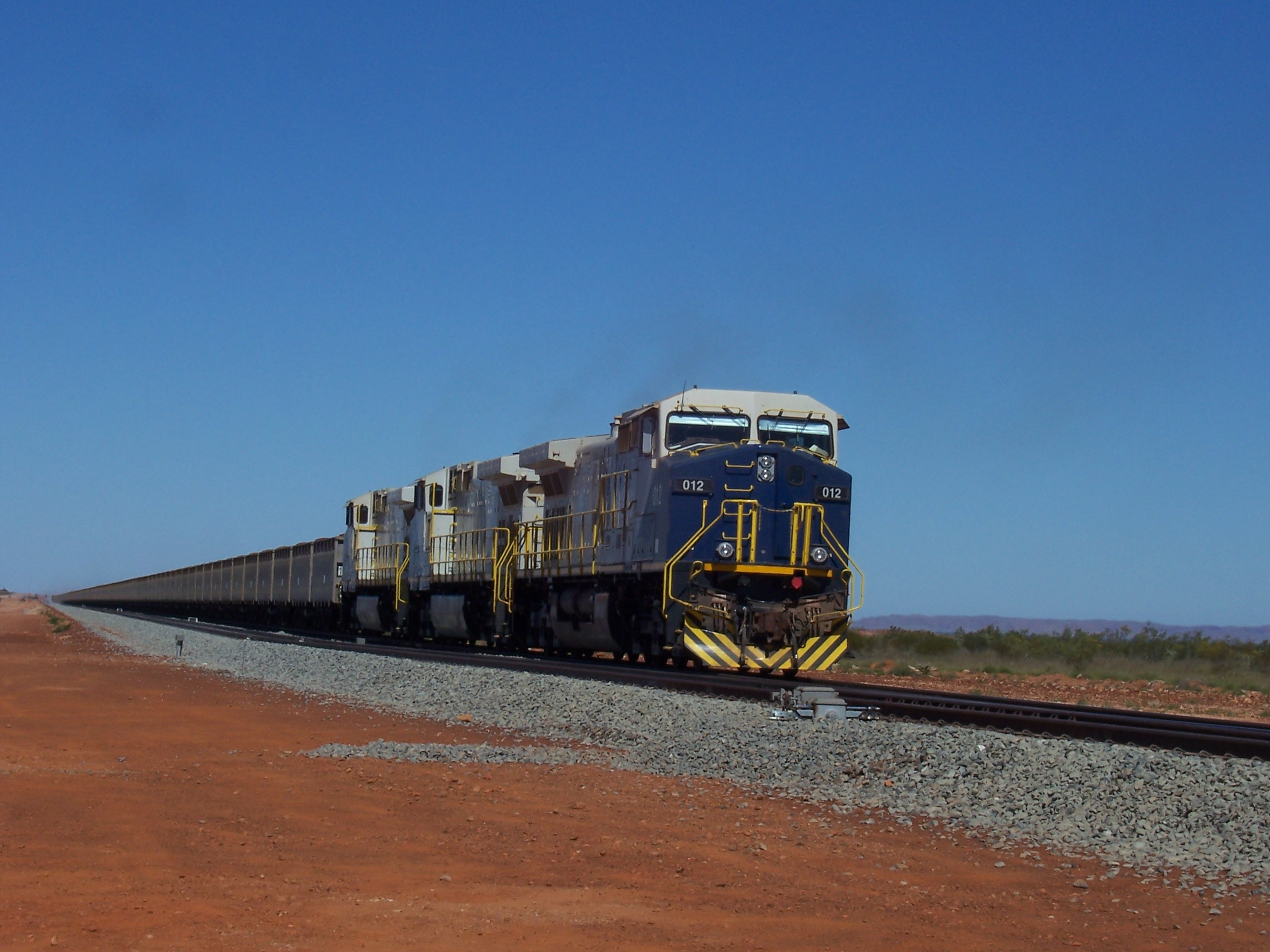|
Uaroo
Uaroo Station is a pastoral lease that operates as a cattle station and has previously operated as a sheep station. It is located about south of Onslow and west of Paraburdoo in the Pilbara region of Western Australia. The property shares boundaries with Nanutarra, Glenflorrie, Winning, Nyang and Yanrey Stations. Uaroo encompasses an area of and has a variety of landforms. Rous Creek runs north to south through the property for a distance of and the flanking alluvial plains have the highest pastoral value. About one third of the property is made up of sandy plain country that supports spinifex grasslands dived by rugged hills and ridges. Established at some time prior to 1901, the property was owned by Joseph McCarthy at that time. The store at Uaroo was important to the many prospectors in the area as it was the only place they could obtain provisions, the next nearest being at Onslow. McCarthy was running sheep at the time. In 1923 a flock of 15,239 sheep were gra ... [...More Info...] [...Related Items...] OR: [Wikipedia] [Google] [Baidu] |
Nanutarra Station
Nanutarra Station, commonly referred to as Nanutarra, is a pastoral lease that operates as a cattle station, and previously operated as a sheep station, in Western Australia. Description It is situated about south of Onslow and south east of Exmouth in the Pilbara region. The North West Coastal Highway runs through the property and the Nanutarra Roadhouse is within the station boundary. The Ashburton River and Henry River both traverse the lease. Neighbouring properties include Globe Hill to the west, Uaroo and Glenflorrie to the south, and Boolaloo to the north and east. History The lease was originally used by Harry Higham as grazing land in the 1877, after he had overlanded stock to the property. He developed the homestead in 1884. In 1906 Nanutarra was carrying a flock of approximately 45,000 sheep. By 1919 the holding had grown to become one of the largest in the area. Harry Higham died in 1917, after managing Nanutarra until 1902 then retiring to live in Pe ... [...More Info...] [...Related Items...] OR: [Wikipedia] [Google] [Baidu] |
List Of Ranches And Stations
This is a list of ranches and sheep and cattle stations, organized by continent. Most of these are notable either for the large geographic area which they cover, or for their historical or cultural importance. West Africa *Obudu Cattle Ranch * SODEPA cattle ranches in Cameroon Australia ''Station'' is the term used in Australia for large sheep or cattle properties. New South Wales *Borrona Downs Station * Brindabella Station *Caryapundy Station *Cooplacurripa Station * Corona Station * Elsinora * Momba Station *Mount Gipps Station *Mount Poole Station * Mundi Mundi * Nocoleche *Oxley Station * Poolamacca Station * Salisbury Downs Station *Sturts Meadows Station *Thurloo Downs *Toorale Station * Uardry * Urisino * Yancannia Station Northern Territory * Alexandria Station * Ambalindum * Alroy Downs * Amburla * Amungee Mungee * Andado * Angas Downs Indigenous Protected Area * Anthony Lagoon *Argadargada Station * Austral Downs *Auvergne Station *Ban Ban Springs Station * Banka Ban ... [...More Info...] [...Related Items...] OR: [Wikipedia] [Google] [Baidu] |
Glenflorrie
Glenflorrie Station, also known as Glen Florrie Station, is a pastoral lease that operates as a cattle station. It is located about south of Pannawonica and west of Paraburdoo in the Pilbara region of Western Australia, and occupies an area of . It is currently owned by Murray and Aticia Grey. The Grey family have been producing Brahman cattle for the live export trade. The property is watered by Glenflorrie Creek. It lies between the Ashburton and Henry Rivers, and shares boundaries with Uaroo Station. The traditional owners of the area are the Tharrkari people, who currently lease and manage Ullawarra Station. Glenflorrie was established at some time prior to 1894. In 1896 the property was running both sheep and cattle. The property was acquired by G. W. Hall at some time prior to 1900. Hall placed the property up for auction in 1919. At this time Glenflorrie occupied an area of and was stocked with 7,000 sheep, 300 cattle and 50 horses. The Higham brothers sold Gl ... [...More Info...] [...Related Items...] OR: [Wikipedia] [Google] [Baidu] |
Nyang Station
Nyang Station, often referred to as Nyang and previously known as Wogoola Station, is a pastoral lease that operates as a sheep station. It is located about east of Coral Bay and south of Onslow in the Pilbara region of Western Australia. Nyang occupies an area of and shares boundaries with Yanrey, Uaroo, Winning and Marrilla Stations. The property was established as Wogoola Station in 1891 by a partnership between James Clark and Alexander Cameron. Cameron had previously owned Towera Station, which he had sold the same year. The name Wogoola is the Indigenous Australian name for a waterhole located a few hundred metres away from the homestead. In 1951 the station was put up for auction again. The property, carrying a flock of 6,300 sheep, attracted a highest bid of £10,000. See also * List of ranches and stations This is a list of ranches and sheep and cattle stations, organized by continent. Most of these are notable either for the large geographic area which t ... [...More Info...] [...Related Items...] OR: [Wikipedia] [Google] [Baidu] |
Yanrey
Yanrey Station, often referred to as Yanrey, is a pastoral lease that operates as a sheep station. It is located about south east of Exmouth and south of Onslow in the Pilbara region of Western Australia. Yanrey occupies an area of and shares boundaries with Minderoo, Koordarrie, Giralia, Nanutarra, Uaroo and Nyang Stations. The station is made up of broad sandy plains with areas of alluvial clay plains. The Yannanie River flows north-south through the property with flood plains extending outward. The property is able to hold a maximum number of 47,000 sheep. The station was originally established by John and David Stewart. It was sold to Thomas Frederick de Pledge following the death of John Stewart. De Pledge was already familiar with the area having worked for the Stewarts as a jackaroo and for Alexander Forrest and Septimus Burt on neighbouring Minderoo Station for seven years. De Pledge was appointed manager at Yanrey in 1897 and purchased the property in 1898, wh ... [...More Info...] [...Related Items...] OR: [Wikipedia] [Google] [Baidu] |
Andrew Forrest
John Andrew Henry Forrest (born 18 November 1961), nicknamed Twiggy, is an Australian businessman. He is best known as the former CEO (and current non-executive chairman) of Fortescue Metals Group (FMG), and has other interests in the mining industry and in cattle stations. With an assessed net worth of 27.25 billion according to the ''Financial Review'' 2021 Rich List, Forrest was ranked as the second richest Australian. According to the ''Financial Review'', Forrest was the richest person in Australia in 2008. In 2013, Andrew and Nicola Forrest, his wife, were the first Australian billionaires to pledge the majority of their wealth to charity in their lifetimes. He had earlier stepped down as CEO of Fortescue Metals in 2011. Much of the Forrest's philanthropy has been through either the Minderoo Foundation (focusing on education and Indigenous Australians) or the Walk Free Foundation (focusing on ending modern slavery), both of which he established. Forrest has been ... [...More Info...] [...Related Items...] OR: [Wikipedia] [Google] [Baidu] |
Cattle Station
In Australia and New Zealand, a cattle station is a large farm (station is equivalent to the American ranch), the main activity of which is the rearing of cattle. The owner of a cattle station is called a ''grazier''. The largest cattle station in the world is Anna Creek Station in South Australia, which covers an area of . Improvements Each station has a homestead where the property owner or the manager lives. Nearby cottages or staff quarters provide housing for the employees. Storage sheds and cattle yards are also sited near the homestead. Other structures depend on the size and location of the station. Isolated stations will have a mechanic's workshop, schoolroom, a small general store to supply essentials, and possibly an entertainment or bar area for the owners and staff. Water may be supplied from a river, bores or dams, in conjunction with rainwater tanks. Nowadays, if rural mains power is not connected, electricity is typically provided by a generator, although ... [...More Info...] [...Related Items...] OR: [Wikipedia] [Google] [Baidu] |
The Northern Times
''The Northern Times'' was a newspaper published in Carnarvon, Western Australia from 1905–1983. History ''The Northern Times'' was published from 26 August 1905 to 26 August 1983 in Carnarvon, Western Australia. It absorbed the ''Geraldton-Greenough Sun'' and changed title to the ''North West Telegraph''. It was established as "a paper for the North", with a distribution area covering Broome, Carnarvon, Kununurra, Meekatharra, Wyndham, Cue, Mount Magnet, Mullewa, Sandstone, Wiluna and Yalgoo and was published weekly. The editor was Hugh Bismarck Geyer. Digitisation The paper has been digitised as part of the Australian National Digitisation Program of the National Library of Australia The National Library of Australia (NLA), formerly the Commonwealth National Library and Commonwealth Parliament Library, is the largest reference library in Australia, responsible under the terms of the ''National Library Act 1960'' for "mainta .... See also * Pilbara n ... [...More Info...] [...Related Items...] OR: [Wikipedia] [Google] [Baidu] |
Pastoral Leases In Western Australia
A pastoral lifestyle is that of shepherds herding livestock around open areas of land according to seasons and the changing availability of water and pasture. It lends its name to a genre of literature, art, and music ( pastorale) that depicts such life in an idealized manner, typically for urban audiences. A ''pastoral'' is a work of this genre, also known as bucolic, from the Greek , from , meaning a cowherd. Literature Pastoral literature in general Pastoral is a mode of literature in which the author employs various techniques to place the complex life into a simple one. Paul Alpers distinguishes pastoral as a mode rather than a genre, and he bases this distinction on the recurring attitude of power; that is to say that pastoral literature holds a humble perspective toward nature. Thus, pastoral as a mode occurs in many types of literature (poetry, drama, etc.) as well as genres (most notably the pastoral elegy). Terry Gifford, a prominent literary theorist, defi ... [...More Info...] [...Related Items...] OR: [Wikipedia] [Google] [Baidu] |
The Australian
''The Australian'', with its Saturday edition, ''The Weekend Australian'', is a broadsheet newspaper published by News Corp Australia since 14 July 1964.Bruns, Axel. "3.1. The active audience: Transforming journalism from gatekeeping to gatewatching." (2008). "''The Australian'' has long positioned itself as a loyal supporter of the incumbent government of Prime Minister John Howard, and is widely regarded as generally favouring the conservative side of politics." As the only Australian daily newspaper distributed nationally, its readership of both print and online editions was 2,394,000. Its editorial line has been self-described over time as centre-right. Parent companies ''The Australian'' is published by News Corp Australia, an asset of News Corp, which also owns the sole daily newspapers in Brisbane, Adelaide, Hobart, and Darwin, and the most circulated metropolitan daily newspapers in Sydney and Melbourne. News Corp's Chairman and Founder is Rupert Murdoch. ''The ... [...More Info...] [...Related Items...] OR: [Wikipedia] [Google] [Baidu] |
Minderoo Station
Minderoo Station, commonly referred to as Minderoo, is a pastoral lease that once operated as a sheep station but now operates as a cattle station in Western Australia. Description It is situated about south of Onslow and west of Pannawonica in the Pilbara region. The property occupies an area of and is traversed by the Ashburton River; the property has an estimated double frontage to the river. The property spreads out from the river forming a vast plain of sand and clay. The word ''Minderoo'' is Aboriginal in origin and means "place of permanent and clean water". History The station was initially formed by E.T. Hooley, who was given the pastoral lease in 1867 by the colonial Government of Western Australia as a reward for creating a stock route from Perth to Roebourne. By 1869, the local Aboriginal population began to use force to try to break the British occupation of their land. One of Hooley's shepherds, a man named Hill, was found dead and it was presumed he was ... [...More Info...] [...Related Items...] OR: [Wikipedia] [Google] [Baidu] |
Fortescue Metals Group
Fortescue Metals Group Limited (often referred to as Fortescue Metals Group, FMG, or simply Fortescue) is an Australian iron ore company. As of 2017, Fortescue is the fourth-largest iron ore producer in the world. The company has holdings of more than 87,000 km2 in the Pilbara region of Western Australia, making it the largest tenement holder in the state, larger than both BHP and Rio Tinto. Governance Andrew "Twiggy" Forrest is chair and owns a third of the company. Elizabeth Gaines is currently the CEO of Fortescue, but Forrest will assume an 'Executive Chairman' role and in effect act as the CEO on an interim basis from August 2022 when Gaines moves into the role of global brand ambassador for the company's renewable energy arm, Fortescue Future Industries until a replacement is found. Mining projects The group has two main areas of operation located within the Pilbara region of Western Australia, the Chichester Hub and Solomon Hub. Plans to develop a third, Wes ... [...More Info...] [...Related Items...] OR: [Wikipedia] [Google] [Baidu] |




